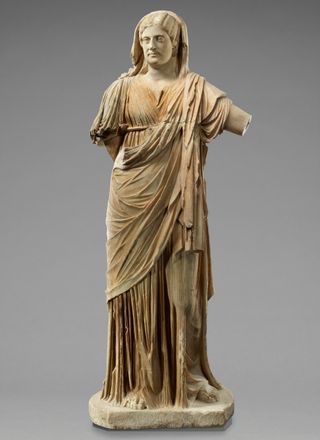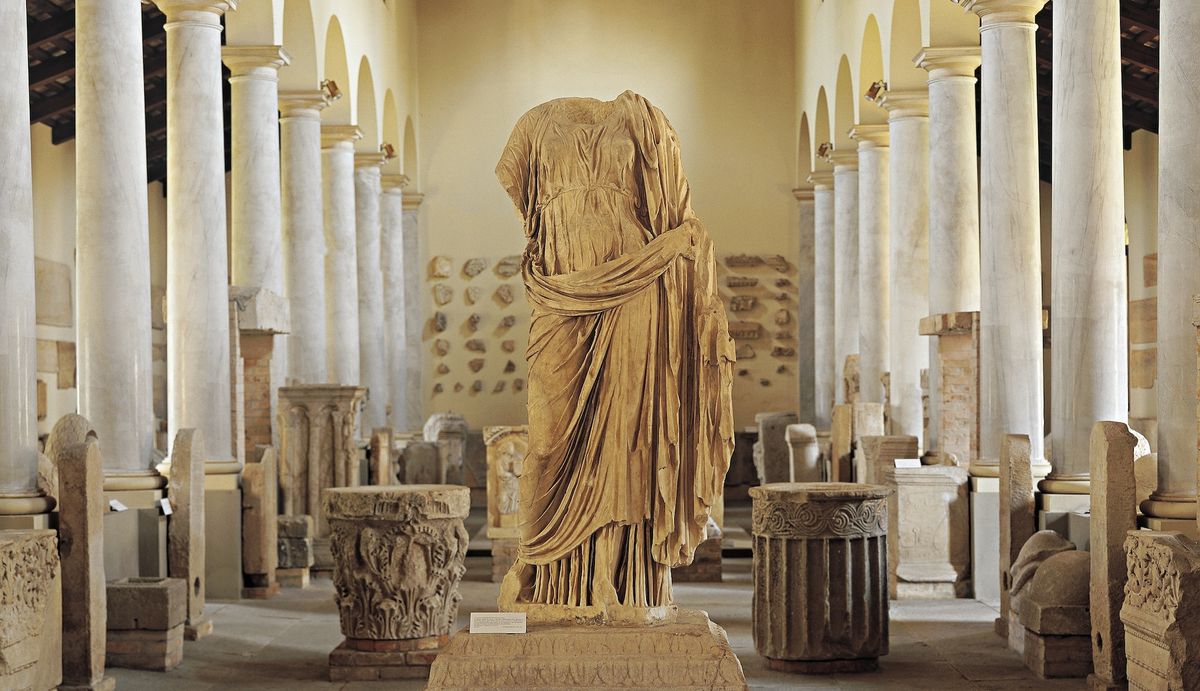When a museum displays a piece of art, they generally try to show the whole thing. It’s rare to see a painting with half the canvas missing, or a tapestry with one side unraveled. But when it comes to ancient Roman statues, being a little broken is almost the norm. Walk around any museum of classical art, and you’ll likely see shattered noses, cleaved fingers and an awful lot of severed heads.
So why are so many Roman statues headless? Answering that question requires some “archaeological CSI” work, said Rachel Kousser, a classics and art history professor at Brooklyn College and the City University of New York.
“You’re trying to look at the context of the sculpture; you’re trying to look at the break itself,” she explained. “You’re thinking about patterns that you’ve seen in other sculptures.” Though it’s often not possible to know for certain how a statue lost its head, these sorts of clues have led archaeologists to a few common causes.
Ancient beheadings
Kousser said the first and most mundane reason so many statues get beheaded is that the neck is a natural weak point on the human body. When a statue falls after years of being displayed, is carted around the world or is transferred between owners, the neck is generally the first place to snap.
But broken heads aren’t always an accident; sometimes, the Romans deliberately smashed their own statues. In a process called “damnatio memoriae,” the Roman Senate could vote to condemn the memory of an especially disliked emperor after his death. If the vote passed, the Senate would erase the emperor’s name from records, seize his property, and deface his portraits and statues. According to Kousser, the infamous emperor Nero was one example of this, and many of his portraits were damaged or reworked.
Related: Did Nero really fiddle while Rome burned?
What’s more, Roman sculptors would sometimes deliberately design their statues with removable heads that “popped out” at the neck. According to Kenneth Lapatin, antiquities curator at the J. Paul Getty Museum in Los Angeles, this design allowed them to use different materials for the body and face, have different sculptors working on the same statue, or even replace the head altogether down the road.
These statues are distinctly recognizable because the bodies have a hole where the sculptor could insert the neck, and the head has a smoothly carved edge where the neck ends, rather than a jagged break.
Modern-day decapitations

On rare occasions, statue heads have been removed in modern times, Lapatin said. Roman sculptures fetch big bucks on the antiquities market, and nefarious art dealers learned they could bring in more money by selling two artifacts instead of one — so they decapitated statues themselves.
Statue of a Draped Woman at the Getty is one example of this. By the time the museum acquired the 7-foot-tall (2.1 meters) statue in 1972, all that was left was the body — but archival photographs showed the sculpted woman had a head at least through the 1930s.
When the museum’s senior curator noticed an antiquities dealer selling a head that looked suspiciously like the one from the broken statue in his collection, it was clear that someone had split the two sometime during the 20th century.
“We don’t know the details, but it seems that whoever did this operation thought that they probably could do better selling a headless statue on the one hand, and a head on the other,” said Lapatin, who was not directly involved in the purchase or restoration of the statue.
Although sloppy “hacking” and “drilling” on the neck made it difficult to fit the head and body together, Lapatin said, conservators were eventually able to reattach the pieces, resulting in a rare reunion between an ancient statue and its head.


